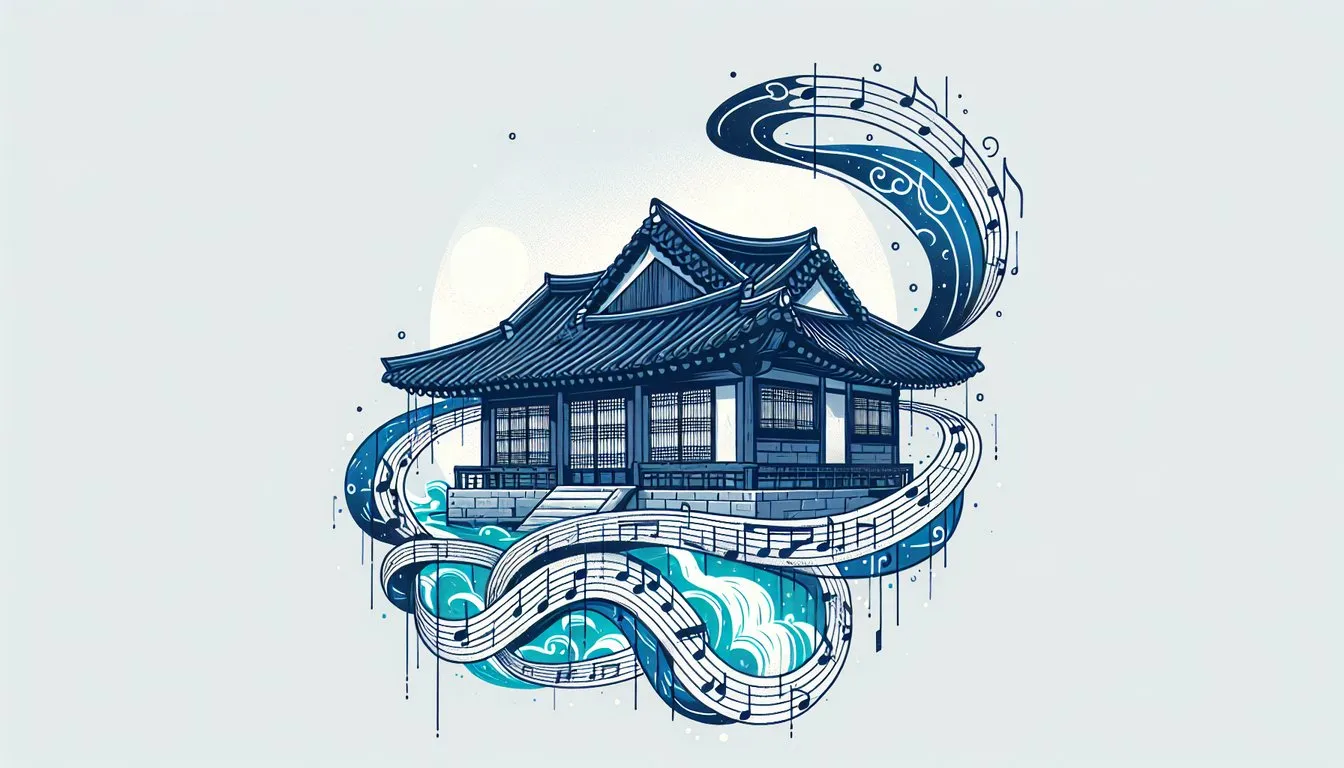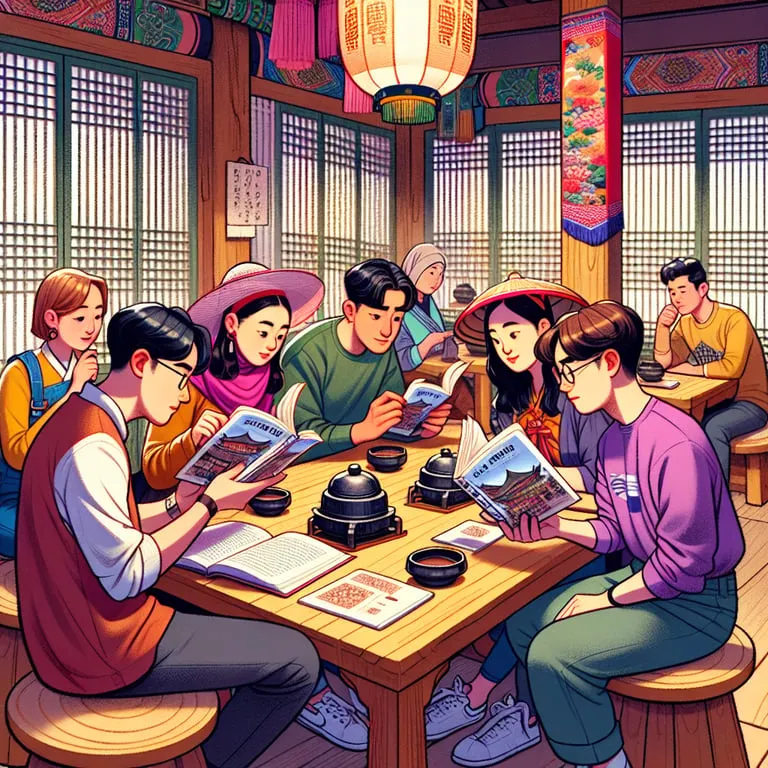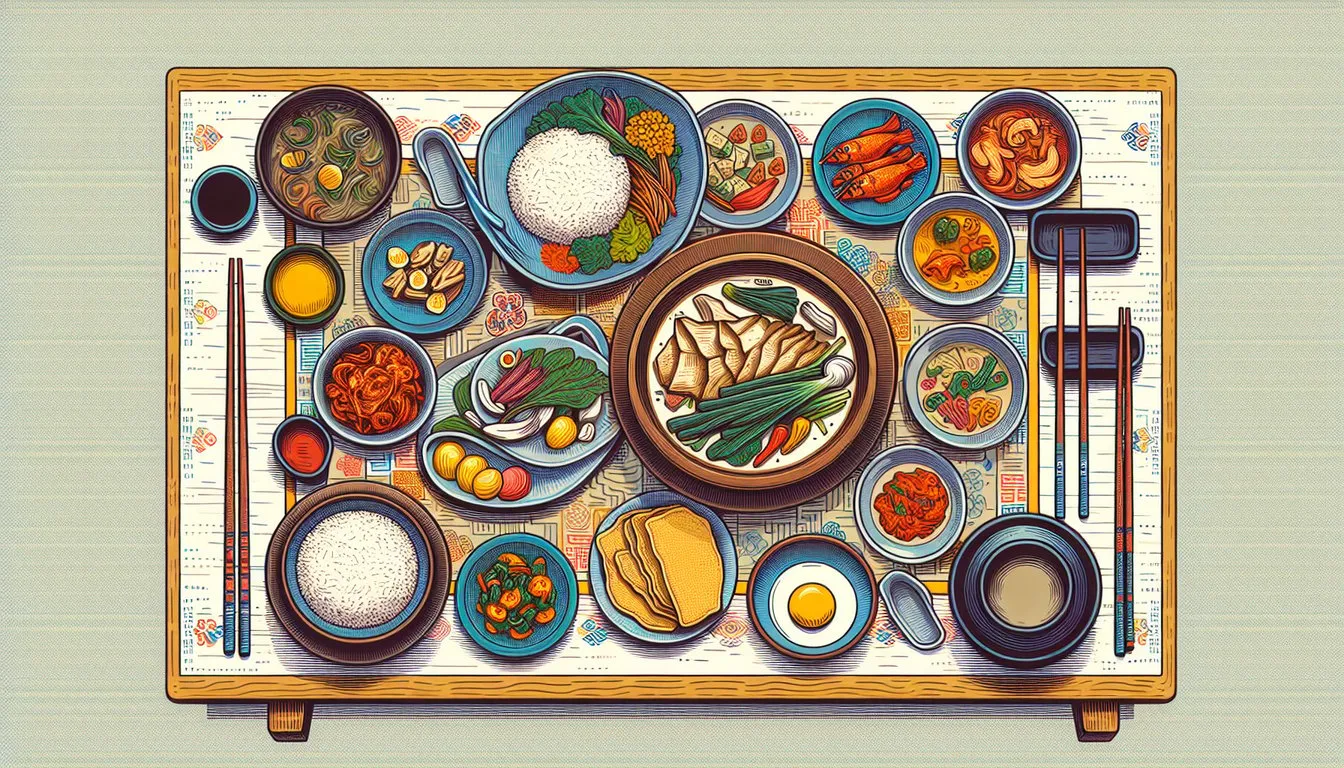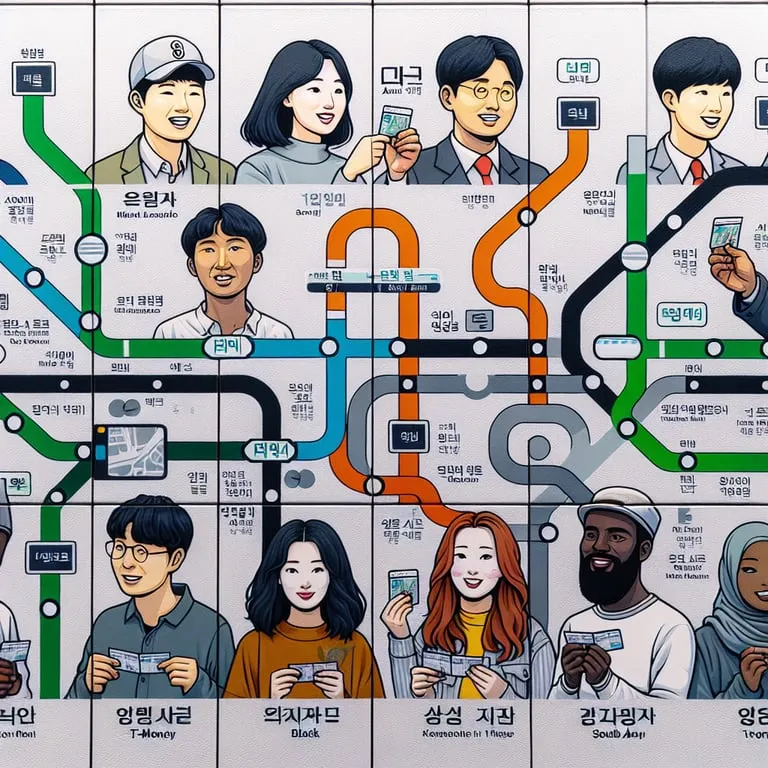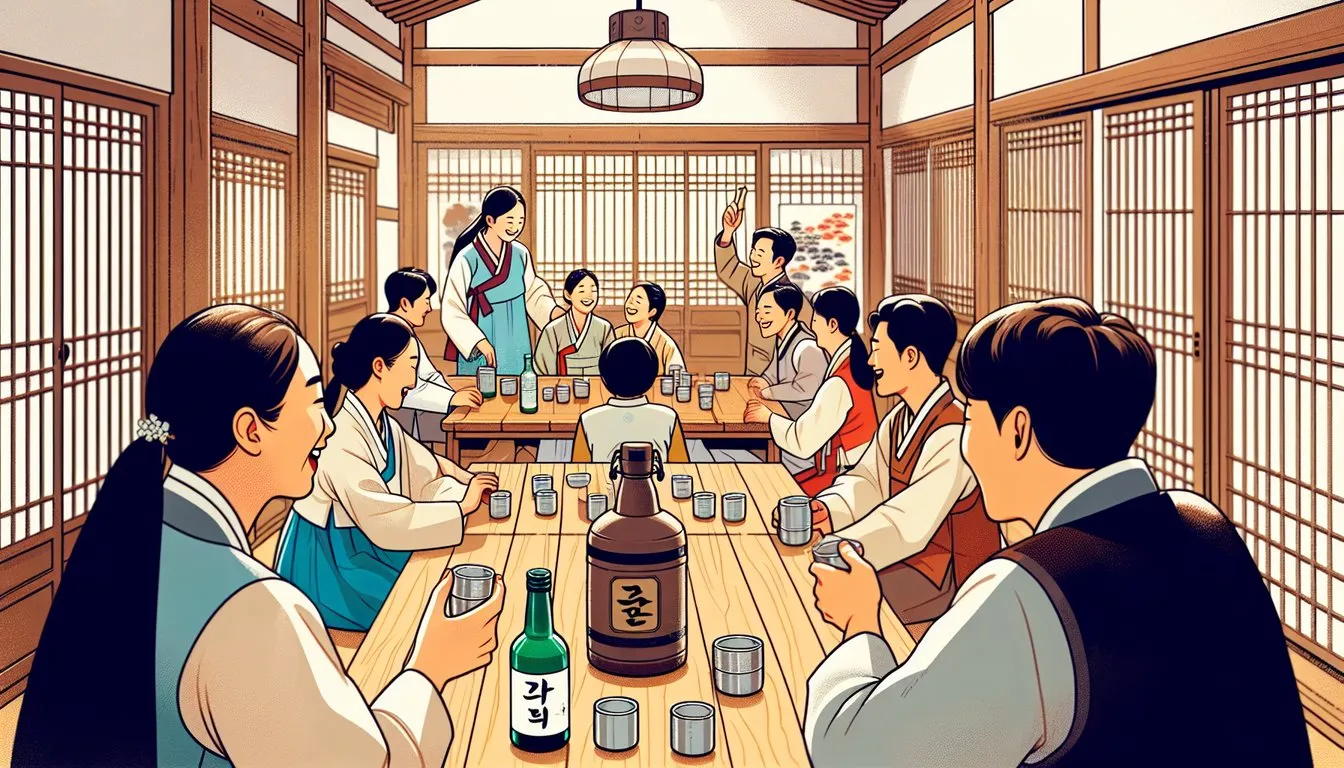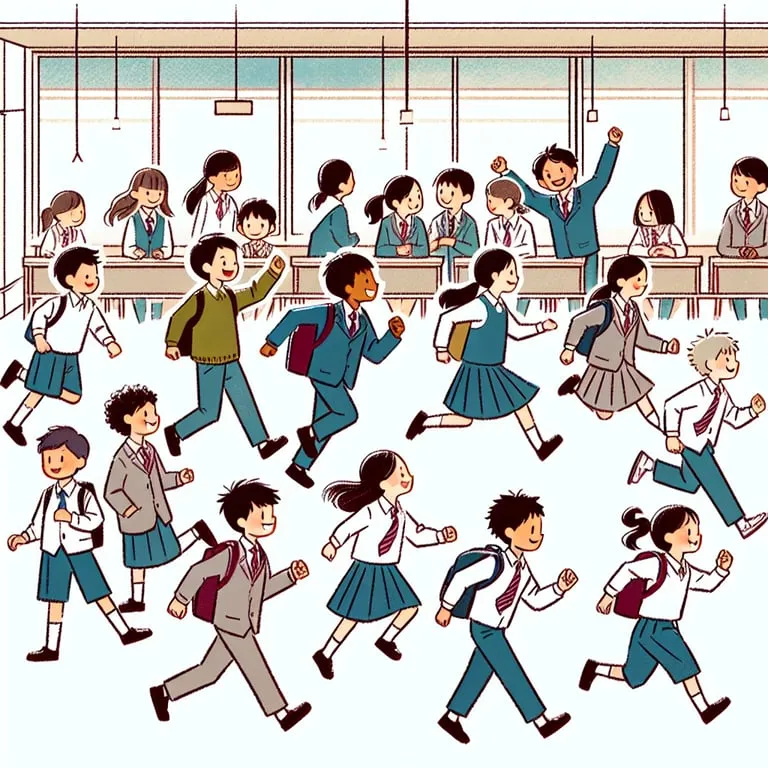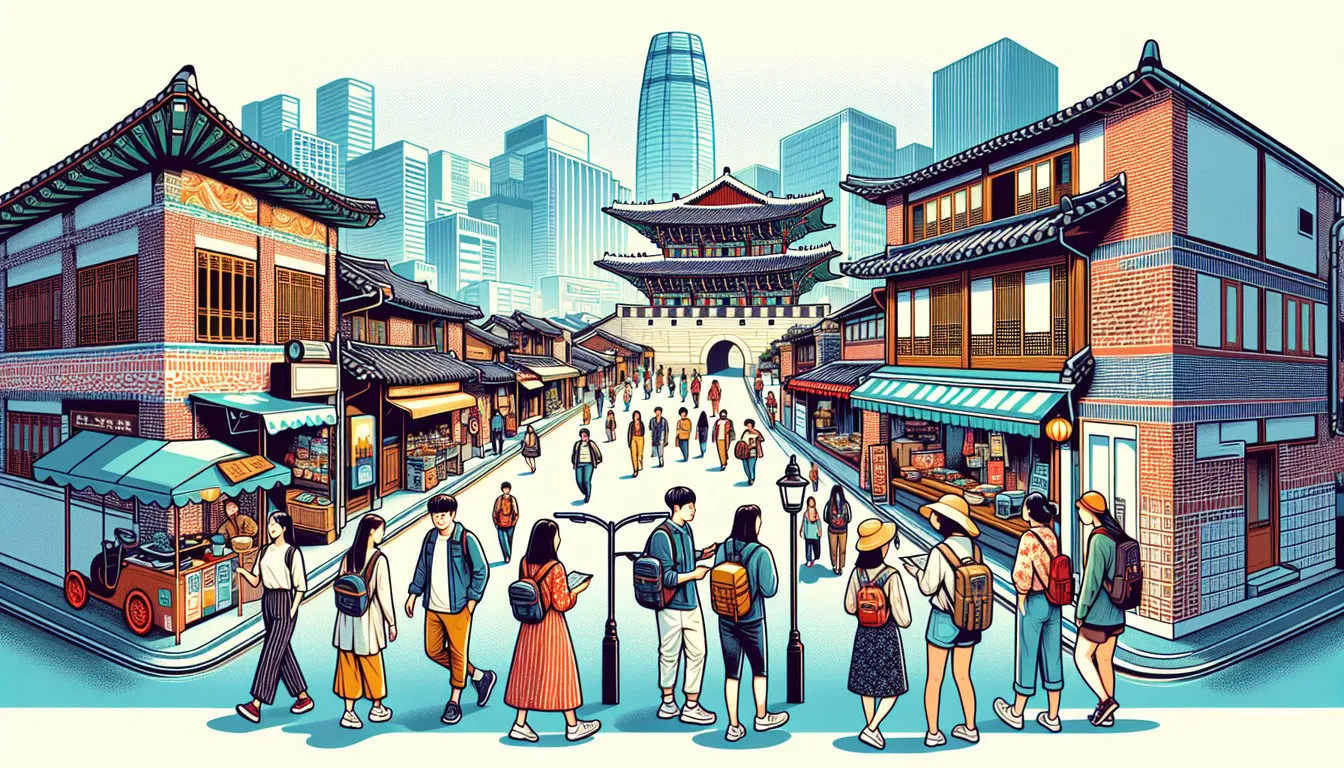Korea, a land of vibrant culture and rich history, bursts with energy throughout the year with its myriad of captivating festivals. These events, woven into the fabric of Korean society, offer a profound insight into the nation’s cultural heritage and modern innovations. As each season unfolds, Korea hosts unique celebrations that paint the land with colors, flavors, and traditions. From the blossoms of spring to the winter snows, every festival offers something special, inviting you to explore the cultural tapestry of Korea. Whether you’re chasing cherry blossoms or marveling at traditional performances under the crisp autumn sky, there is always a festival worth experiencing. Embrace this journey through Korea’s festive calendar and uncover the essence of its seasonal splendor.
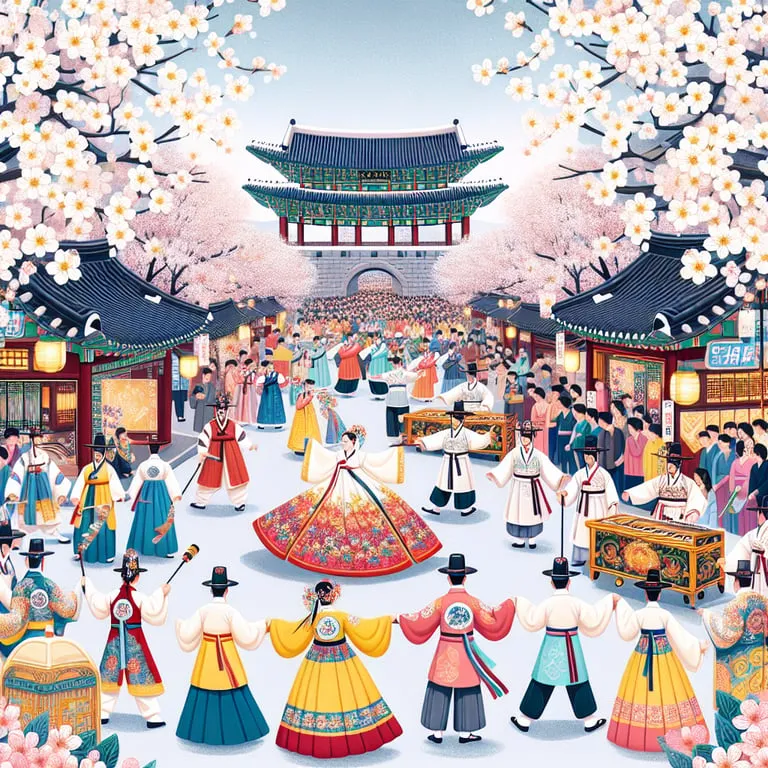
Springtime Celebrations: A Blooming Experience
Springtime in Korea heralds a magnificent tapestry of celebrations, each one more vibrant and colorful than the last, as the nation emerges from the cold embrace of winter into the warmth of renewal. These celebrations offer a unique blend of cultural, historical, and natural splendor that one must experience to truly appreciate. Let’s delve into this flourishing season and uncover the blossoming experiences awaiting visitors.
Jinhae Gunhangje Festival
One of the most iconic spring events is the Jinhae Gunhangje Festival, which takes place in the city of Jinhae. Established in 1963, it celebrates the thousands of cherry blossom trees that burst into an explosion of delicate pink petals across the region. With over 360,000 trees, Jinhae becomes a panoramic spectacle that captures the hearts and cameras of more than 2 million visitors each year. Timing is everything, and while the exact dates vary depending on the bloom, the festival usually occurs between late March and early April. Attendees can partake in a variety of activities, from romantic walks under the cherry blossom canopies to participating in military band parades and fireworks displays that light up the night sky.
Goryeosan Azalea Festival
Venturing north is the tranquil yet equally enchanting Goryeosan Azalea Festival on Ganghwa Island. From mid-April to early May, Mount Goryeo dons a vibrant robe of azaleas, inviting hikers and nature enthusiasts to traverse its trails. This festival is not just a feast for the eyes; it’s a testament to the harmony between Korea’s untouched landscapes and cultural heritage. Participating in a hike provides a rewarding experience, with panoramic views from the mountain’s peaks offering glimpses of the West Sea and surrounding islands. Virtually untouched by the hustle and bustle of city life, the festival instills a sense of peace and admiration for Korea’s botanical beauty.
Yeouido Spring Flower Festival
Moreover, the Yeouido Spring Flower Festival, held in the heart of Seoul, offers urban dwellers a chance to celebrate the season’s blooms without leaving the comfort of the city. Situated along the Han River, the event features a stunning display of cherry blossoms as well as forsythias, azaleas, and royal azaleas. Drawing more than 4 million visitors annually, it is an opportunity to blend floral beauty with art and culture, as street performances and art installations pepper the landscape. As the city skyline provides a contrasting backdrop, watching the sun set along the river with cherry blossoms gently falling provides an unmatched urban-rural blend of serenity that is truly captivating.
Damyang Bamboo Festival
Springtime celebrations in Korea are not only limited to flowers. The Damyang Bamboo Festival offers a different green experience, integrating Korea’s cultural appreciation for bamboo with a modern touch. Visitors engage in activities such as bamboo crafting and traditional performances. This festival emphasizes the importance of bamboo in Korean history and culture, as well as its applications today, from eco-friendly materials to culinary delights like bamboo-infused rice.
Hadong Wild Tea Cultural Festival
Culinary aficionados are in for a treat during the Hadong Wild Tea Cultural Festival. This event highlights the region’s traditional tea-producing heritage, inviting tea lovers to immerse themselves in tea-making experiences and savor the delicate flavors of various teas. The spring harvest, known as “u-jeon,” is especially prized for its fresh and delicate taste, revered among tea connoisseurs. It’s an educational exploration where one learns the meticulous art of tea cultivation and preparation – from picking the tenderest leaves to perfect brewing techniques – all elements that enhance the aroma and flavor profiles unique to Korean green tea.
Icheon Sansuyu Festival
To further explore Korea’s springtime offerings, the Icheon Sansuyu Festival showcases the sunny yellow sansuyu flowers, also known as cornus officinalis or Japanese cornel. The festival, usually held in mid-March, is a celebration of both the humble sansuyu flower and local traditions. Visitors can take part in cultural experiences such as traditional dance and craft exhibitions. This lesser-known celebration allows for more intimate interactions with local culture and hospitality, as it welcomes visitors warmly to explore quaint villages adorned in blossoming yellow.
Spring in Korea is indeed a blooming experience, each festival offering a unique perspective into the nation’s rich tapestry of culture and natural beauty. The season is an open invitation to experience the symbiotic relationship between Korea’s natural landscapes and its cultural identity, an opportunity that shouldn’t be missed. Whether you are walking under a canopy of cherry blossoms or sipping freshly brewed tea in a serene garden, the promise of spring’s renewal is sure to leave a lasting impression.
Summer Extravaganzas: Sizzling Events and Traditions
Summer in Korea is a season of vibrancy and exuberance, where traditional and modern festivities converge to offer an unforgettable experience. One of the highlights of the summer is the Boryeong Mud Festival, which takes place annually on Daecheon Beach. Every July, approximately 2 to 3 million fun-seekers gather to indulge in the therapeutic properties of Boryeong’s rich minerals. It’s more than just a pleasant muck-about (!); the mudslides, marathons, and competitions make it an action-packed adventure. Notably, the festival also aims to promote Boryeong’s range of mud-based beauty products. Fun and skincare in one go? Yes!
The Busan Sea Festival
Moving from the mud to the horizon, the Busan Sea Festival is another must-experience extravaganza. Spanning five days in early August, this festival magnificently attracts crowds exceeding 1.5 million people. At Haeundae Beach, expect to dive into large-scale water sports events, from surfing and water-skiing to beach volleyball. Even after the sun dips below the horizon, the excitement never wanes, with beach parties and fireworks illuminating the night sky. It’s a quintessential summer event that beautifully showcases Busan’s charm as Korea’s bustling seaside city.
Han River Watersports Festival
Summer in Korea wouldn’t be complete without mentioning the Han River Watersports Festival. The Han River, a central landmark of Seoul, plays host to this electrifying event. Set against Seoul’s iconic skyline, the festival invites you to unwind with various dynamic watersport activities, such as kayaking, paddle boarding, and motor boating. This festival bridges the gap between urban and aquatic life, offering an escape from Seoul’s fast-paced rhythm.
Andong International Mask Festival
Intriguingly marking Korea’s summer calendar is also the Andong International Mask Festival. Though not entirely beachy, it seamlessly blends rich Korean traditions with contemporary culture. Each September, visitors delve into the vibrant world of traditional Korean masks, known as Tal, exploring dance performances and engaging in mask-making workshops. In 2022, the festival saw participation from over 150,000 visitors worldwide, showcasing its escalating stature as a global cultural phenomenon. This festival is not just an event but a portal to Korea’s historical and cultural depths.
Pohang International Fireworks Festival
Equally captivating is the Pohang International Fireworks Festival; a kaleidoscope for the eyes that attracts fireworks enthusiasts from across the globe. Held at Yeongildae Beach in late July, it features jaw-dropping firework displays that light up the night with bursts of crackling color reflecting down into the dark waters below. The event includes competitive displays by international teams, performance arts, and music—an orchestra of splendor culminating in a dazzling spectacle.
Incheon Pentaport Rock Festival
One cannot overlook Korea’s passion for music and performance, vividly seen in the Incheon Pentaport Rock Festival. As one of Asia’s premier rock festivals, it draws tens of thousands of rock enthusiasts each year, featuring both local talents and international stars. Held every August, it is not just a mere concert but a gathering of those who share a love for raw and soulful music. The festival’s electrifying energy pulses through your veins while the eclectic mix of sounds creates an atmosphere akin to a musical paradise.
The vibrancy of a Korean summer is rooted in both its traditions and its embrace of modern celebrations. The sizzling events and rich festivals not only warm the hearts of visitors but craft an intricate mosaic that reflects Korea’s cultural dynamism. So, whether you’re wading through refreshing mud, dancing under fireworks, or chilling at a lively beach party, Korea’s summer festivities offer a patchwork of cultural experiences you shouldn’t miss.
Autumn Festivities: A Harvest of Culture and Color
Autumn in Korea is a mesmerizing time of year when the landscapes transform into vibrant seas of red, orange, and gold. The season is not only a feast for the eyes but also a time of rich cultural celebrations that capture the heart and soul of the nation. As the temperatures cool and the harvest season approaches, Koreans indulge in an array of traditional festivities that date back centuries, each steeped in history and cultural significance. With over 70% of the Korean Peninsula covered in mountains, it’s no surprise that the changing of the leaves draws millions of visitors each year, marking the beginning of numerous outdoor festivities.
Chuseok Festival: A Time of Gratitude and Remembering
One of the most prominent events during this season is the Chuseok Festival, which is often likened to Thanksgiving. Chuseok, celebrated on the 15th day of the eighth lunar month, is one of Korea’s most cherished holidays. Families gather to honor their ancestors through rituals like “Charye” (차례), which involves offering food and drinks to ancestral spirits. This harmonious blend of tradition and family ties reinforces the cultural fabric of Korea, making Chuseok a highlight on the autumn calendar.
Traditional Games and Activities: A Nod to Agricultural Roots
During this period, various traditional games and activities such as “Ssireum” (씨름, traditional wrestling) and “Ganggangsullae” (강강술래, a traditional Korean circle dance) are revived. These activities reflect the agricultural roots of Korean society, echoing a time when communities came together to celebrate the harvest season with song and dance.
Seoul Dragon City: A Cultural Hub
Seoul Dragon City, one of the largest lifestyle hotel-plexes in Asia, becomes a focal point for cultural exhibits and performances. It showcases vibrant exhibitions that encapsulate the essence of Korean traditions during this period. Visitors can witness breathtaking displays of traditional Korean garments, known as “hanbok” (한복), which are intricately crafted and worn with pride during the celebrations.
Andong Mask Dance Festival: Celebrating Heritage
Moreover, the Andong Mask Dance Festival is a cultural extravaganza not to be missed. Held in Andong—a city renowned for its preservation of Korean folk heritage—the festival features an array of performances that bring to life traditional mask dances known as “Hahoe Byeolsingut Talnori” (하회별신굿탈놀이). These expressive dances are not merely entertainment; they are a profound insight into Korean shamanistic rituals and ancient storytelling that have been recognized by UNESCO as an Intangible Cultural Heritage.
Jeonju Bibimbap Festival: A Culinary Celebration
As part of the celebration of the harvest, the Jeonju Bibimbap Festival draws gourmands from all corners of the globe. Jeonju, the birthplace of bibimbap, celebrates this iconic dish with gusto. Each year, the event serves up thousands of bowls, allowing both locals and international visitors to partake in this culinary tradition. It’s not just about gastronomic delight; the festival is a homage to the harmony of diverse ingredients coming together to create a perfect dish, reflecting the communal and inclusive spirit of Korean culture.
Local Festivals: A Diverse Array
In parallel, hundreds of local festivals pepper the Korean countryside. The Jinju Namgang Yudeung Festival, with origins dating back to the Imjin War of the late 16th century, illuminates the night sky with a dazzling display of lanterns. This festival honors historical bravery and fosters community spirit, as participants float illuminated lanterns down the Namgang River—a sight that’s both beautiful and poignant.
Baekje Cultural Festival: Echoes of an Ancient Kingdom
The auditory senses are equally indulged during the Baekje Cultural Festival, which draws inspiration from the Baekje Kingdom, one of Korea’s ancient Three Kingdoms. Through music and reenactments, the festival retells the stories of this illustrious civilization, forging a connection between past and present. Visitors are transported back in time through creative showcases, fostering appreciation for Korea’s rich historical tapestry.
Modern Innovations: Technology in Tradition
Adding a modern twist to these time-honored traditions, technology has become an integral part of autumn festivities. Digital art installations and interactive experiences are increasingly common, allowing for an engaging fusion of old and new. This dynamic integration not only captivates younger generations but also ensures that these cultural celebrations remain relevant and vibrant for future audiences.
In summary, Korea in the fall is a vibrant mosaic of history, culture, and nature harmoniously blended in a way that offers an unparalleled cultural immersion. The autumn celebrations are a testament to Korea’s ability to honor its deep-rooted customs while embracing the new, offering a rich tapestry of experiences that are as colorful and varied as the foliage that covers the land during this majestic season. As the leaves fall and the winds turn crisp, the festivals continue, celebrating the harvest of culture and color that defines Korean autumns.
Winter Wonders: Snowy Festivals and Holiday Cheer
In the heart of winter, Korea transforms into a breathtaking wonderland, adorned with sparkling snowflakes and festooned with vibrant lights. This is the time when Korea showcases its unparalleled seasonal charm through a medley of festivals that celebrate both the pristine beauty of winter and the warmth of traditional holiday cheer. Stretching across the months from December to February, Korea’s winter festivals offer an ideal blend of natural splendor and cultural richness that draws visitors from across the globe. Some festivals attract over a million visitors annually, such as the acclaimed Hwacheon Sancheoneo Ice Festival, highlighting Korea’s ability to host grand events with seamless precision.
Hwacheon Sancheoneo Ice Festival
Arguably the crown jewel of Korea’s winter festivities is the Hwacheon Sancheoneo Ice Festival, a must-visit event for those seeking a truly unique experience. Situated in the picturesque town of Hwacheon, in Gangwon Province, this festival attracts over 1.5 million visitors each year, drawn to its icy charm. The focal point of the festival is ice fishing, where participants fish for sancheoneo, or mountain trout, through circular holes drilled into the thick ice of the frozen Hwacheoncheon Stream. Patrons often take pride in catching their own fish and relish in the opportunity to cook and taste their fresh bounty on-site—a tradition that resonates deeply with local customs.
However, the festival offers more than just fishing. Attendees can partake in various snow and ice-themed activities, including ice sledding, bobsledding, and snow sculptures that are awe-inspiring in their intricate detail. The vibrant night scenery, illuminated by colorful lights, creates a panoramic spectacle that captivates the senses and provides countless photo opportunities. The festival’s international reach and charm have earned it a spot on CNN’s travel website, ranking it among the world’s top winter festivals.
Taebaeksan Mountain Snow Festival
In January, the Taebaeksan Mountain Snow Festival offers a majestic display amidst the powdery, pristine landscapes of Taebaeksan, one of Korea’s most revered mountains. Revered for its awe-inspiring snow sculptures, which often depict iconic landmarks, characters, and mythical creatures, this festival is an artist’s haven. The sculptures are crafted by teams of local and international artists who utilize hundreds of tons of snow to create their wintry masterpieces. Each year, the themes are carefully curated to reflect the cultural narratives and artistic eloquence of the participating artists.
The festival is more than just an artistic endeavor. Visitors can engage in traditional games and activities, such as Korean sledding and traditional wedding reenactments, which offer a glimpse into Korea’s cultural tapestry. Taebaeksan is also a revered destination for avid hikers, who brave the chilly climes to witness the ethereal snow-capped peaks and ice-covered trees, known locally as “snow flowers.”
The observatory deck, located at the top of Mt. Taebaek, provides unobstructed, panoramic views of the surrounding snow-drenched landscapes that are surely not to be missed.
PyeongChang Trout Festival
PyeongChang, known worldwide for hosting the 2018 Winter Olympics, is also home to the PyeongChang Trout Festival, nestled in the serene region of Jinbu-myeon. This month-long festivity starts from late December and offers a distinct rural charm. Beyond ice fishing, which is similar to the celebrated Hwacheon festival, the PyeongChang event is noteworthy for its expansive food market where visitors can sample an array of trout-based delicacies prepared using traditional and modern recipes.
Furthermore, the festival offers an intriguing blend of modernity and tradition with ATV rides, fishing and snow tubing atop the vividly icy slopes. With an emphasis on family-friendly activities, the festival boasts programs tailored for children, making it a harmonious event that connects generations through shared joy.
Seollal: Korean Lunar New Year
The warmth of holiday cheer truly culminates with Seollal, the Korean Lunar New Year, typically celebrated in January or February depending on the lunar calendar. Seollal ranks as one of Korea’s most significant holidays, marking a time when families reunite to honor their ancestors, wear traditional hanbok, and participate in age-old customs. Traditional games such as yutnori, a board game played with wooden sticks, and Jegichagi, a game akin to hacky sack, are enjoyed across age groups, fostering an atmosphere of familial warmth and unity.
One of the focal points of the Seollal tradition is the ceremonial rite called Charye, which showcases culinary delicacies like tteokguk (rice cake soup)—a dish symbolizing the gaining of wisdom and a year in age. This event is a colorful tapestry of reunions, feasts, and rituals that resonate with the values of familial bonds and respect.
Korea’s winter festivals provide a distinctive juxtaposition of cold weather activities and heartwarming traditions, encapsulating the very essence of wintry delight. The harmonious blend of cultural heritage and thrilling snow adventures offers a spectrum of experiences for every traveler, making it clear why Korea remains an irresistible winter destination. Whether you come seeking the thrill of the icy outdoors or the cozy warmth of traditional festivities, Korea’s winter landscape greets you with open arms and unforgettable memories.
Korean festivals offer a captivating glimpse into the nation’s rich tapestry of culture, tradition, and natural beauty. Each season unveils its own unique charm, from the vibrant blossoms of spring to the festive cheer of winter. These celebrations not only highlight Korea’s diverse cultural heritage but also provide unforgettable experiences for locals and visitors alike. Whether you immerse yourself in the colorful traditions of autumn or embrace the sizzling summer festivities, these events are essential to truly understanding and appreciating Korea’s allure. Visiting these festivals, one gains a deeper appreciation of the rhythms of Korean life and culture.
